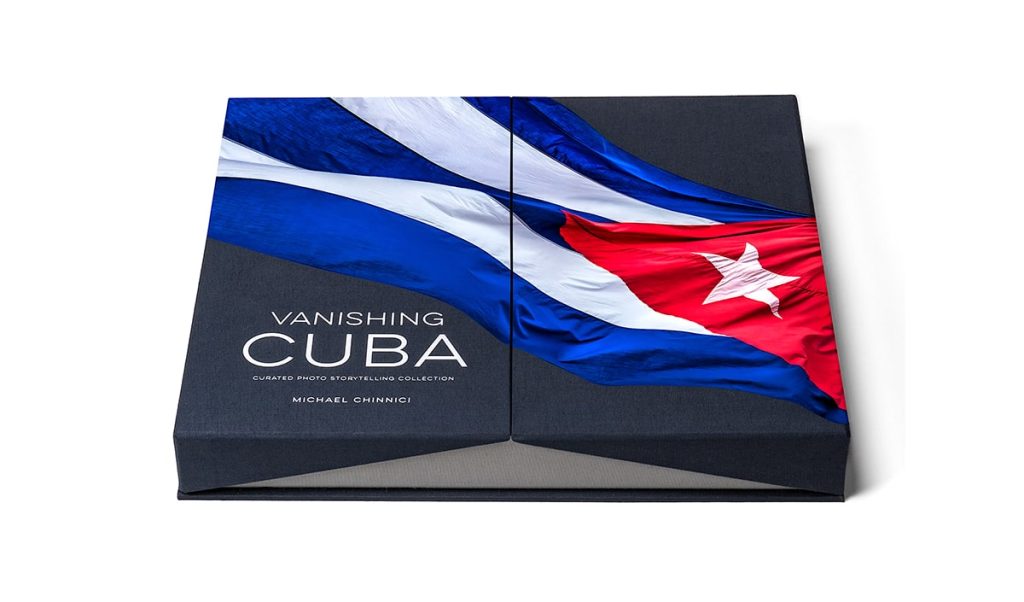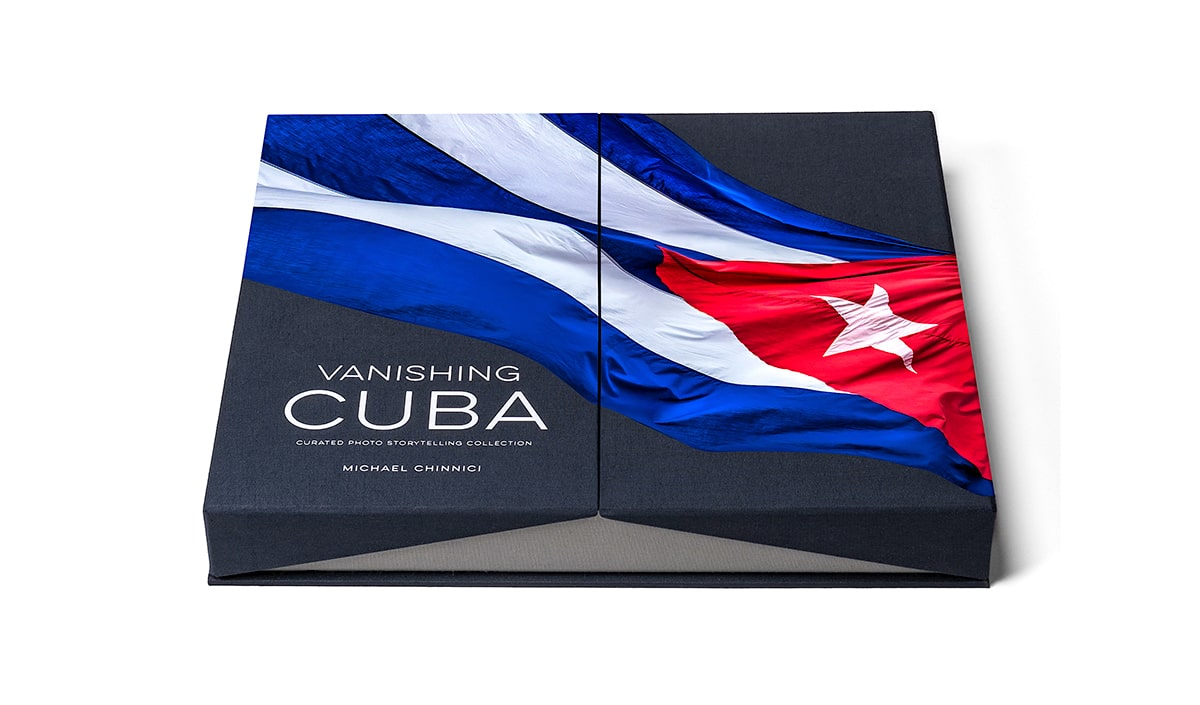Michael Chinnici: “I Want You To Be Moved By An Image”
The American photographer discusses the stories behind his new book, Vanishing Cuba, the art of spontaneity and never settling for mediocrity.
Michael Chinnici is calling in from Miami. The “Reserve Edition” of his new book, Vanishing Cuba, is currently on display at Art Basel. “It’s one of the most inspiring places I could be,” he says. “The depth and breadth of creativity is wonderful.”
Spanning more than 300 photographs, Vanishing Cuba is the result of 24 trips Chinnici took to Cuba to capture the country’s spirit and document everyday life, along with the changes currently afoot in terms of technology and modernization. “All cultures as we know them transition,” Chinnici notes. “So, when I say ‘vanishing,’ I don’t mean it’s going away. I mean it’s a country that’s been lost in time for 60 years.”
With all but one of the shots taken in natural light, authenticity is important to Chinnici. Wanting to document the truth, he’ll spend time blending into the environment, so those around him feel comfortable with the camera, and simply take pictures of what he sees. “If there is decay, you can see it. If there is education, you can feel it. If there is fresh fruit, you’ll see how fresh the fruit is.”
The process of both writing and creating the images for the book saw Chinnici take thousands of photographs. In order to whittle those down to a final cut, he had to embark on an intense process of curation.
“Curating is an art,” he explains. “It comes down to the images that are most powerful and mean the most to you. I’m a visual storyteller — a travel documentary storyteller. When you’re putting a book together, you want to look at all the elements that go into that book.”
He also talks about something he describes simply as a “feeling,” of knowing whether he’s captured something special on a certain day. “It usually happens pretty instantly,” Chinnici shares. “I can go out for the entire day and without looking back on my images, say it’s been a great day and I’ve got a couple of great images, because I felt them when I took them.”
They say every picture paints a thousand words. When you speak with Chinnici, you understand the truth in that. He talks of a particular image he took in Trinidad in 2015.
“The More You Photograph, The More You Find You Want To Go Deeper Than Just Documenting Something”
“I came across an elderly gentleman climbing into a window. I started joking, saying a robbery was in progress,” Chinnici shares. “He answered, saying it was his house and had left his keys inside. I took his picture, and it’s in the book. Ever since, he’s invited me into his home. I learned about him, and every time I return to Trinidad, I check on him, and we have lunch and coffee.”
Vanishing Cuba is part of a wider series. He’s also working on Vanishing India, a project with a similar concept. “Going to India is like going to 40 countries at once. You’ve got 22 official languages, 121 languages spoken by 10,000 or more people. There are over 19,000 native tongues. In 25, maybe 50, years, all the rural stuff will disappear. It won’t have the diversity it has in the way it has now. It will vanish.”
Chinnici’s passion for photography and image-making started young. As someone who loves technology, he talks about being enthralled by the idea of capturing something on camera and watching it develop in the darkroom. “It was wild, like watching a magician,” he says.
His mother, an artist, warned him against taking the same path, saying, “You’ll starve in a loft in Soho, N.Y.” But after a 30-year career in advertising and marketing (all while pursuing photography as a hobby), he wanted to get back to pursuing photography seriously. So, 12 years ago, Chinnici founded Photo Workshop Adventures, a company offering highly curated small-group guided photography tours in more than 50 countries that bring together his love for travel, culture, cuisine and design — all through the lens of taking photos.
As well as his projects in Cuba and India, Chinnici has just returned from Oaxaca, Mexico, where he was documenting their celebrations of the Day of the Dead.
“The more you photograph, the more you find you want to go deeper than just documenting something,” he says. “You look for creativity. Photography, for me, has evolved to where I’m looking to capture emotion, authenticity. Photographing someone in a location, whether it’s Cuba, Turkey, Mexico, is not about photographing where I am or something that’s beautiful. That’s important, but you also have to evoke emotion. I want you to be moved by an image, whatever shape or form that might be.”
As part of that, he talks about the magic of spontaneity. In the same way he happened upon the man climbing into his window in Trinidad, Chinnici talks of stumbling upon a woman in Oaxaca who owned a marigold field, and he asked if he could shoot there.
“Next thing we know, we’re at her home, she’s bringing in all these family members and then, two days later, we spent two afternoons photographing the family preparing for all the Day of the Dead celebrations. They cooked for us, and we drank with them. The spontaneity was priceless.”
For all the people he’s met and places he’s spent time in, it’s authenticity and commitment to his work that stand true. When asked what advice he would impart to his four children, Michael Chinnici says, “Be yourself. Be true to yourself. Love and be loved and don’t ever succumb to mediocrity, because that is the death of creativity.”
www.michaelchinnici.com
@michaelchinnici
www.redoctopuspublishing.com
Interview by Estelle Zentil













































































